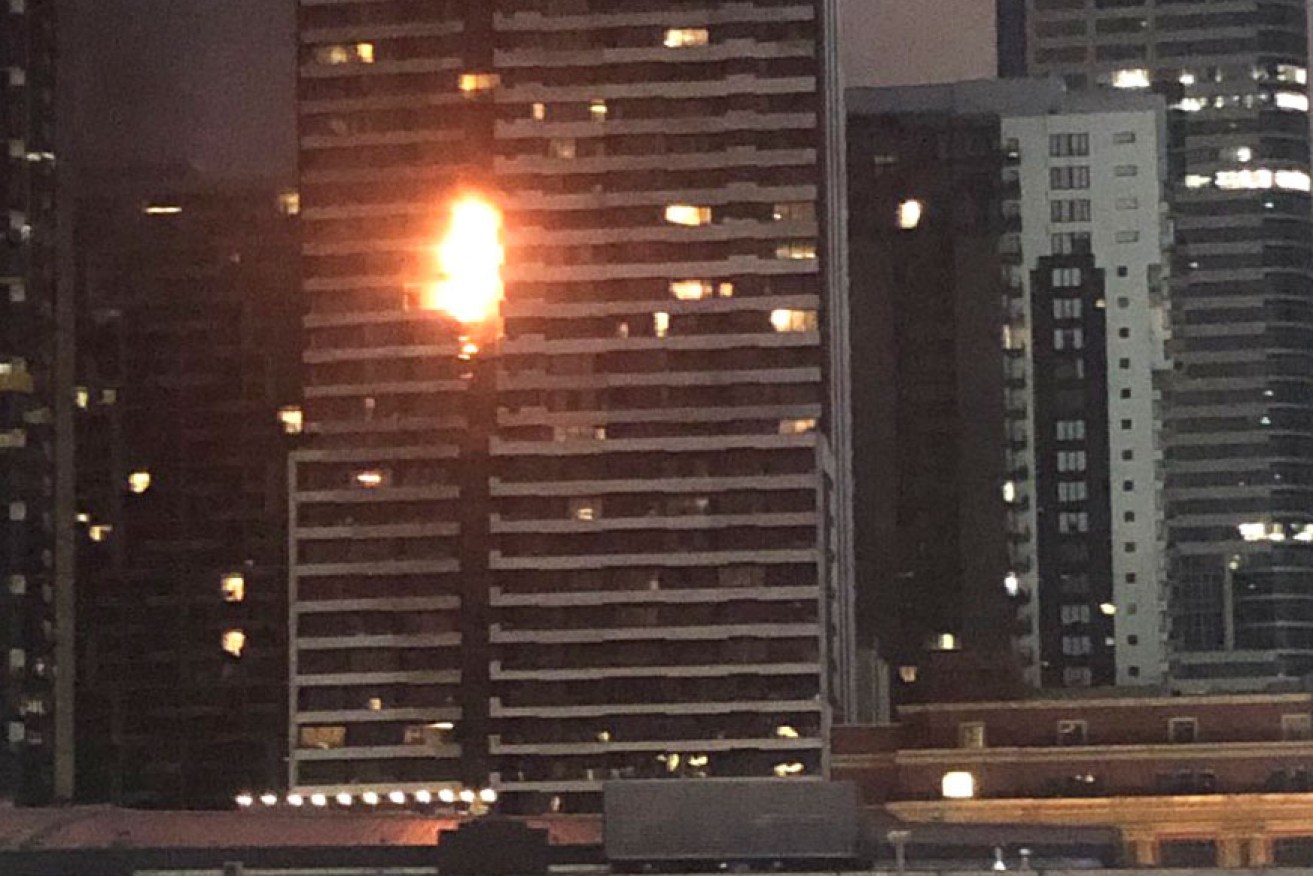Cladding crisis spreads into the suburbs as nine more materials are classed as non-compliant

A fire in Melbourne this month that involved combustible cladding. Photo: Twitter
Thousands more homeowners could now find themselves caught up in Australia’s cladding crisis, after authorities issued an alert banning the use of another nine types of cladding.
The alert affects an unknown number of dwellings, including single-storey family homes, which had previously been largely unaffected but are now not compliant with building codes.
Until now, most of the concern relating to non-compliant cladding was focused on flammable material used primarily on high-rise buildings.
The decision, by Australia’s leading building product accreditation agency, to withdraw support for the cladding materials has left industry experts stunned and residents potentially facing massive rectification costs.
The Victorian Building Authority (VBA), which regulates the state’s building sector, issued an alert on Wednesday afternoon stating that CertMark International had withdrawn nine certifications for cladding systems.
CertMark International is the agency that the Australian Building Codes Board (ABCB) relies upon to determine whether building products are compliant.
It is not yet known why CertMark International has withdrawn the certification.
The VBA alert said the certification withdrawal meant nine types of cladding “cannot be relied upon as evidence of suitability”, meaning they would no longer be regarded as compliant with building codes.
The Australian Institute of Building Surveyors also issued urgent advice to builders.
The organisation’s vice president, Wayne Liddy, said the affected products were commonly used on small residential homes as well as high-rise apartments, meaning the impact would be felt throughout Australian cities and suburbs.
“It’s very alarming,” Mr Liddy said.
It affects the industry as a whole. From high-rise to suburban housing.
“It not just aluminium composite panel, or ACP, it’s also expanded polystyrene, which is common in many buildings with fewer than three storeys.
“Many of these products thought to be compliant are no longer.
“We have buildings that we thought would be compliant using the regulatory system that we have, and now they’re not.”
The issue of combustible cladding was thrust back into the national spotlight after fire quickly spread up the side of a Melbourne apartment building earlier this month.Firefighters confirmed combustible cladding helped fuel the blaze, which spread from a balcony on the 22nd floor of the Neo200 building to the 27th floor.
The building had been deemed “medium risk” under the state’s cladding audit, and had been issued with two show cause notices last year due to the combustible cladding.
Up until now, issues surrounding combustible cladding have been largely restricted to residential buildings above three storeys.
That is because the potentially dangerous products have been found on medium and high-rise properties throughout Australia, even though national building codes prohibit combustible materials from being used on the walls of residential buildings taller than three storeys.
“It’s a system of regulatory failure,” Mr Liddy said.
The ABC has contacted CertMark International for comment.
-ABC








